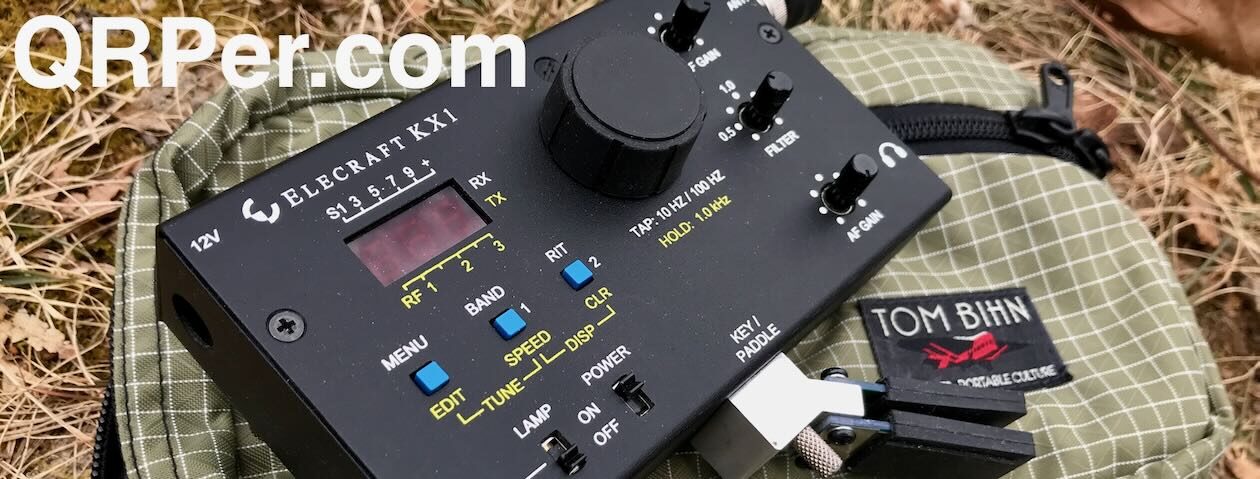by Vince (VE6LK/AI7LK)
As always there are links within the article. Click one! Click them all! Learn all the things!
In December of 2023, I found myself with a surplus of vacation from my employers, and my Brother who’s move-in date to his new home got suddenly moved forward to just before Christmas. I was able to get time off work and make an epic road trip with POTA stops along the way to both allow me to have some radio fun and to give my body a stretching break. My trip would take me from my home in Alberta, westward through British Columbia, southward into Idaho, Washington, Oregon and I even made it as far as Northern California to see the Pacific before turning around and heading back home.
Along the way, I activated at 14 stops which totaled 21 parks in all after factoring in the 2-fer, 4-fer and 5-fer stops! This was a total of 301 actual QSOs netting 508 after the x-fers were computed in. It was a mix of CW and voice with an average of 21 contacts per stop.
There were many highlights of the trip, and naturally spending time with my brother and his wife were at the top of the list–despite the work of moving into a house–followed by the simply spectacular scenery along the route and the route planning itself. While this trip was decided upon on a Thursday evening and I was on the road the following Monday, I still found about 10 hours to research points of interest along my routes and look for POTA entities that had either not been activated yet or were CW ATNO, having only had a Phone or Digital activation previously. For the most part, these were the stops I targeted as my waypoints.

Driving along the Columbia River Gorge on I-84 approaching Rooster Rock State Park felt like driving along the base of the Grand Canyon, given the 1000′ height of the cliffs beside me. Rooster Rock State Park (K-2850), is notable for two reasons. 1 – it’s a 5-fer activation point – my first 5-fer stop ever doing POTA, and 2 – it’s windy as heck as you can see in this short video I took for Charlie W7RTA who told me, via Discord, it would blow [what’s left of my hair] off my head.
Click here for 7 seconds of the Columbia River Gorge wind whipping the hair off my head!
Certainly Rooster Rock was a highlight given it’s the only 5-fer activation I’ve ever done. It was activated two hours after a 4-fer at Willow Creek State Fish and Wildlife Area (K-10646). I only learned about the multiples after chatting with folks on the POTA Discord server.
It was a short drive from Rooster Rock SP to the home of KJ6VU in Oregon City, Oregon. While I’ve worked with George on the Ham Radio Workbench Podcast for nearly three years, I’d never met him in person until this trip. It was such a treat to spend time with him. George is the creator of the Packtenna that so many of us love to use. As luck would have it, the KJ6VU repeater was due for a replacement and scheduled for the next morning, and I was able to put my skills in racking (installing) repeaters to good use. After we finished the repeater I departed and did some performance testing while southbound on I-5 to test its range.

Along the way I got to have a coffee break with Nick Smith NT3S who I had met via Discord. Nick can be found activating parks and going overlanding on weekends. Thanks Nick for the time to have a break with you!
Over the next several days I spent time in Grants Pass Oregon assisting my brother and his wife to get moved in. Grants Pass even has a Harbor Freight Tools and I was able to get some shopping done! So as it turns out I wouldn’t be slugging boxes every day and there was a bit of a break during my visit to go out and play radio. I know the POTA program is especially popular in the United States and I’d heard that every entity has been activated at least once, which is very different from here in Canada where many parks are untouched. In my research and thanks to the parks added in the autumn of 2023, there are some in the system that had never been activated. On one Saturday afternoon I was able to visit one of these parks -Cathedral Hills Trail System- and work 72 contacts in under an hour on SSB.


On the following Tuesday, I headed out from Grants Pass to head to California if only to tick off the box on POTA’s website saying I’d activated there. I had no idea that Highway 199 would be so scenic. I activated six entities on this day.
At the end of Highway 199 is Tolowa Dunes State Park (K-1202). The photo at the top of this article is on the dunes and at the coast of the Pacific Ocean near Crescent City CA. Yes, I walked along the surf despite the threatening weather. It also allowed me the luxury to park within the dunes themselves to do my activation with a spectacular view. Continue reading 2,112 miles as AI7LK in the US Pacific Northwest













